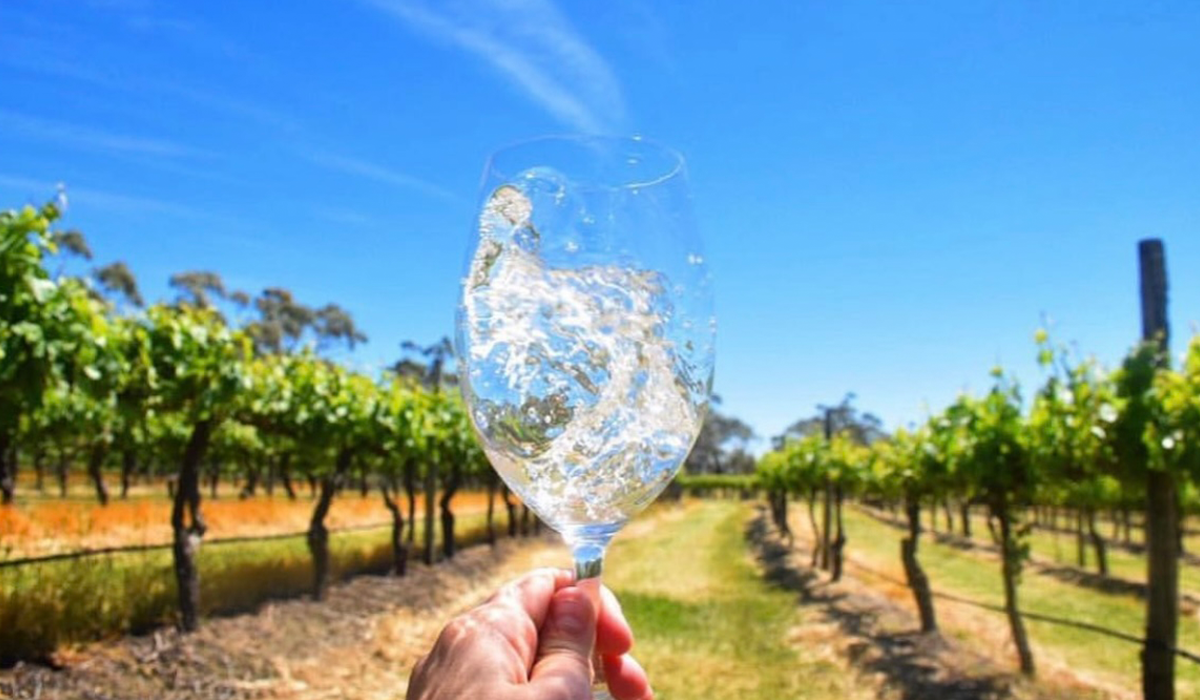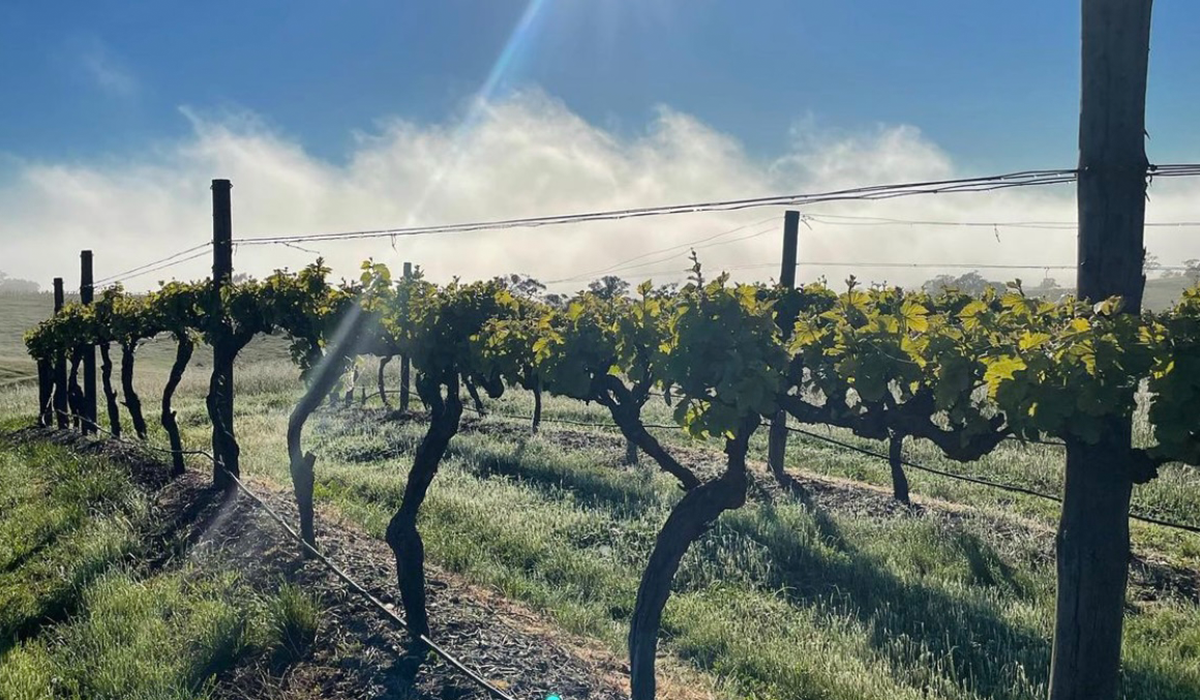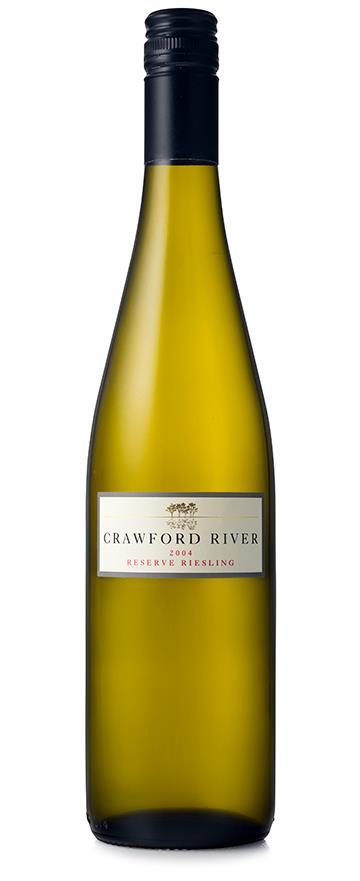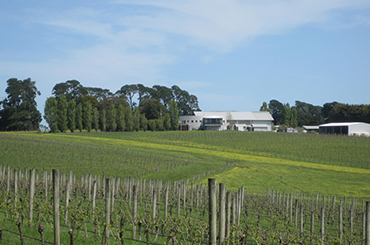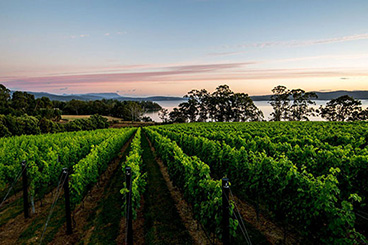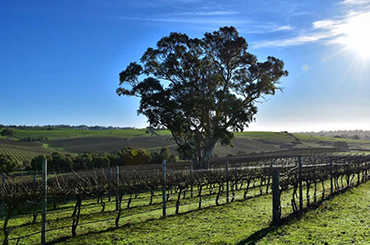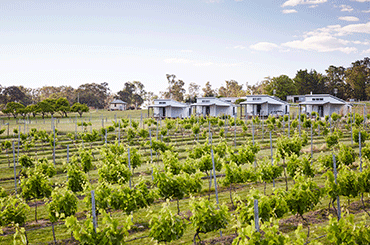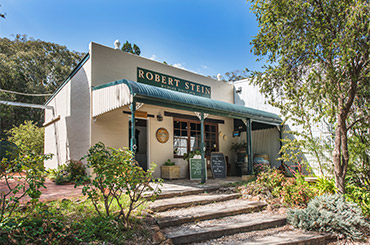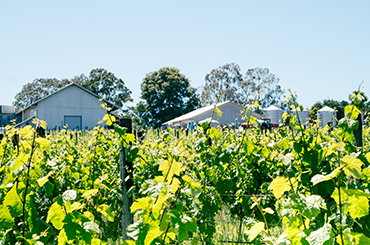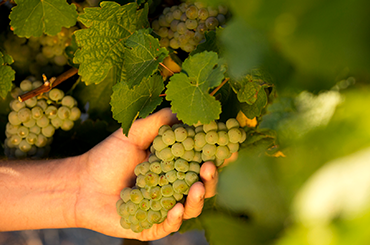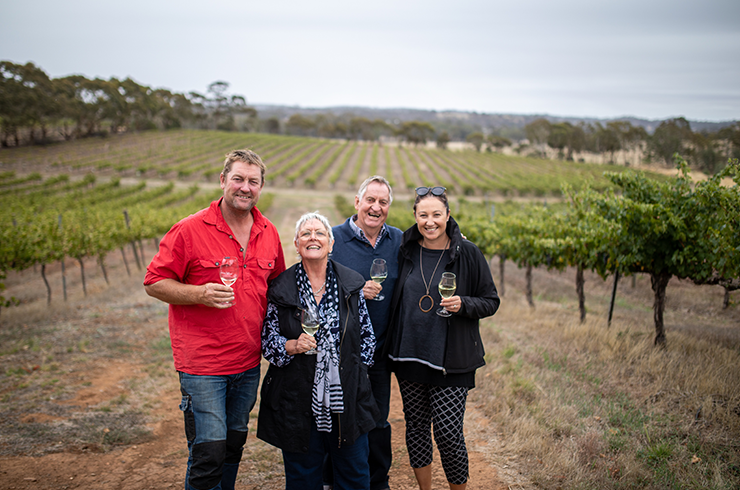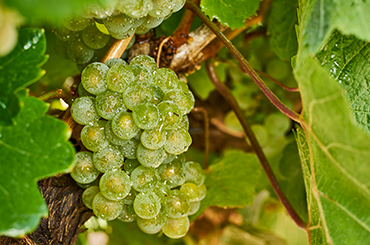Go to section: Riesling tasting characteristics | Origins of riesling | How to pair food with riesling | Serving temperature for riesling | The best Australian riesling regions
Riesling comes in a range of guises, from dry to off-dry, sweet and others in between. Some producers even include a sweetness scale on labels to help communicate the complexities of the variety. It’s a wonderfully versatile wine, with vibrant lemon and lime characters in youth mellowing into luscious, honeyed flavours with age. Learn all about this aromatic white variety ahead.
Riesling tasting characteristics
Riesling wines range from water white in colour to straw green and deep yellow-gold. This high-acid variety displays zesty, juicy flavours of lemon, lime and tart Granny Smith apples when it is less ripe and richer, warmer flavours such as apricot, pineapple and ginger as it increases in sweetness. As it ages, it begins to show nutty, toasty and honeyed characters.Australian rieslings tend to be steely, dry wines with stunning citrus flavours. In contrast, European types are textural and with varying degrees of sweetness (although the trend to produce similar styles locally is rising, as Tasting Team member Jeni Port describes). The obvious categories might be dry, off-dry and sweet, but riesling is so nuanced that this breakdown doesn’t quite do it justice. Perhaps that’s why the Germans came up with their exacting riesling scale, dividing the variety into six styles of ripeness (detailed in the next section), plus various other classifications to do with a wine’s quality, site and residual sugar.
Origins of riesling
Riesling originated in the Rhine River region that crosses both Germany and France’s Alsace, first documented in the 15th century. In Australia, it has been around since the start, with various peaks (in the 1960s and ’70s, and rising again now) and troughs (in the early days when cheap white blends were often called riesling, even if they included none of the wine, and in the ’90s when chardonnay prevailed).
How to pair food with riesling
The diversity of riesling styles means you can find the right kind to match your meal. The refreshing flavours of a young Australian riesling will make a perfect pairing with anything you’d serve with a squeeze of citrus, with seafood being a classic example. Off-dry styles are great with salt and spice, thanks to their combination of sugar, acid and a lower percentage of alcohol – try them with a creamy curry or a flavour-packed Asian stir-fry. Aged examples are an excellent match to full-flavoured cheeses, as are botrytis rieslings, eisweins and other sticky styles, which also work well with fruity desserts.
Serving temperature for riesling
The ideal serving temperature for a standard dry riesling is 7–8 degrees. The ideal serving temperature for a sweeter style riesling is 10 degrees. The ideal serving temperature for an aged riesling is 12 degrees.-
THE BEST AUSTRALIAN RIESLING TASTING NOTES
-
Grosset
G110 2021
Clare Valley -
Henschke
Julius Riesling 2021
Eden Valley -
Crawford River Wines
Reserve Riesling 2015
Henty -
Duke's Vineyard
Magpie Hill Reserve Riesling 2021
Porongurup -
Frankland Estate
Isolation Ridge Riesling 2021
Frankland River -
Frankland Estate
Smith Cullam Riesling 2021
Frankland River -
Best’s Wines
Foudre Ferment Riesling 2021
Great Western
Australian riesling regions
While riesling is adaptable and grown in various conditions worldwide, it prefers a cool environment for producing elegant examples. In Australia, the Clare and Eden Valleys have long been synonymous with riesling. Victoria’s Henty also makes a coveted style, as does WA’s Great Southern, and areas like the Canberra District and Tasmania are increasingly recognised.
Clare Valley
According to James Halliday, the Clare Valley is “the monarch of Australia’s riesling regions”. Its most celebrated rieslings are dry, with fresh citrus and apple characteristics and an incredible depth of flavour balancing natural acidity.
Eden Valley
The Eden Valley produces excellent riesling from vines that are among the oldest in the world. Riesling from the Eden Valley typically has delicate floral aromas and intense lime juice flavours, developing marmalade and honey notes with age.
Henty
Henty riesling tends to be elegant with fine natural acidity. The region sits at the far southwest corner of Victoria, and its volcanic soil and cold climate provide ideal conditions for the variety.
Canberra District
Riesling from the Canberra District is dry, crisp and complex. The combination of cool nights and warm days in this region is perfect for grape growing.
Great Southern
The Great Southern produces riesling that stands tall next to those of famous regions on the east coast. Styles from this sprawling Western Australian region show classic citrus and complex herbal characteristics and are brilliant for ageing.
Tasmania
Boasting one of our coldest climates, Tasmania is renowned for bright and pure riesling with racy acidity.
Mudgee
Thanks to this New South Wales region’s higher elevation sites, it produces aromatic riesling with classic blossom and citrus characters.Featured wineries
More FromRelated articles
-
Meet the Winemaker
Winemakers on Australian riesling
15 Dec 2022 -
Wine Lists
Australian riesling to try
15 Dec 2022 -
News
Great Australian riesling
16 Dec 2022 -
Food And Wine
Riesling pairing
-
Top Rated
Top Rated: Riesling
-
Top Rated
Best riesling in Australia 2025
-
News
2023 Canberra International Riesling Challenge results
16 Oct 2023 -
Wine Lists
50 wines for International Riesling Day
2 Mar 2023
